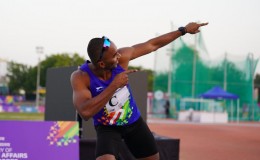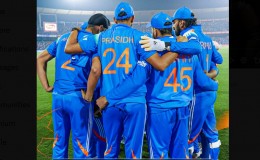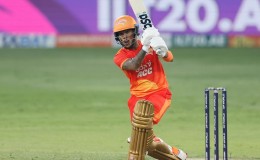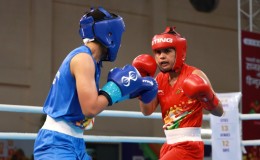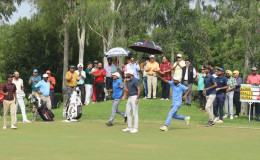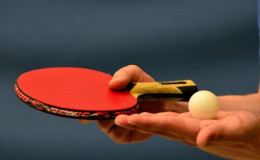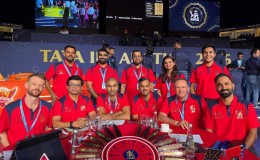 Has Indian cricket been too one-dimensional since its inception into the Test arena? I guess we have for long been known to be a formidable batting-oriented side, which designs its victory by imposing big totals on board and putting their opponents under pressure. We have heavily relied on our spin armoury to get us the wickets on turning tracks meticulously prepared by the curators at home. This recipe of success has served us well in our domestic conditions, but hasn’t been effective when we have travelled abroad.
Has Indian cricket been too one-dimensional since its inception into the Test arena? I guess we have for long been known to be a formidable batting-oriented side, which designs its victory by imposing big totals on board and putting their opponents under pressure. We have heavily relied on our spin armoury to get us the wickets on turning tracks meticulously prepared by the curators at home. This recipe of success has served us well in our domestic conditions, but hasn’t been effective when we have travelled abroad.
Lions at home and Lambs abroad’ can be attributed to lack of a potent pace bowling unit. India doesn’t stand tall amongst its fellow test competitors when it comes to fast bowling credentials.
Test nations like Australia, South Africa, West Indies and our neighbours Pakistan have produced fast bowling legends who have turned the game on its head in alien condition and given their side regular match-winning performances. India has been found wanting to find a decent bowling pair in Test cricket for a very long time.
Indian cricket has been synonymous with its master class batting. Indian batsmen have been christened with adjectives like wristy stroke makers, sublime timers, elegance personified and nimble-footed. But, we have often failed to describe our fast bowlers as tearaway, steaming or lethal as they are ought to be.
So, why has our country not been able to produce the firepower and arsenal in the pace bowling which is much-needed to win test matches abroad.
Let’s take a look into this concern from a bird’s eye view.
It’s not that we haven’t produced greats with the ball, but frankly they all have been spinners. Subash Gupte was India’s first world-class spinner way back in the 50s. Vinoo Mankad was a very handy spinner in the next decade. Then the famous spin quartet of Bishen Singh Bedi, E Prassana, B Chandrashekar and S Venkatraghvan were great servants to Indian cricket for almost two decades.
The 90s had Anil Kumble who went onto become India’s leading wicket taker and arguably the greatest match winner with the ball. With the change of the century, the “Turbanator” from Punjab, Harbhajan Singh carried on the legacy of the art with great distinction.
Between them they also had a decent support cast in Maninder Singh, Shivlal Yadav, Dilip Doshi, Narendra Hirwani, Rajesh Chauhan, Venkatpathy Raju, Sunil Joshi, Nikhil Chopra, Piyush Chawla and Murali Kartik, thus spinners were always available in plenty.
The current spin attack of R Ashwin, Pragyan Ojha Amit Mishra and Ravindra Jadeja have done decently well in domestic conditions but are yet to prove their forte on foreign soil.
Coming onto fast bowling, if my memory serves me correct we have only had Kapil Dev and Zaheer Khan who have managed to bag 300-plus Test wickets in India’s long history of Test cricket. The country had some exceptional fast bowlers when they entered the Test Arena. Amar Singh and Mohammad Nissar were both express pacers in their own time but didn’t play much cricket owing to the independence struggle which took away most of their youth and prime.
Karsan Ghavri was India’s leading and lone pacer in the seventies. The next decade was all about India’s greatest all-rounder Kapil Dev and his exploits with the ball. Kapil was well supported by the likes of Madan Lal, Roger Binny , Chetan Sharma and Manoj Prabhakar. But none of them frankly were world class Test bowlers, though they were more than handy in limited overs arena.
Javagal Srinath was India’s best bowler by a mile in the 90s and carried on the burden of leading the pace attack on his shoulders, though he was ably supported by fellow Karnataka pacer Venkatesh Prasad for a brief period. Srinath eventually succumbed to the heavy burden of carrying the pace attack entirely on his lone shoulders in the test arena.
Ajit Agarkar an ODI specialist and a natural wicket taker burst onto the scene with his initial flurry of wickets in limited overs cricket but never got an extended run in the Test side owing to his lack of discipline and inconsistent lengths. Munaf Patel caught everybody’s attention as an out and out fast bowler but disappeared into wilderness after sometime.
Zaheer Khan became India’s finest exponent with the red cherry in the last decade or so. Khan may have not been an express quick but learnt the craft of bowling in different conditions owing to his fruitful county stint at England. Ashish Nehra, who generated brisk pace, looked good to partner Zaheer in the Test Arena but had his share of serious fitness issues, thereby becoming more of an ODI specialist.
With the turn of the decade all eyes turned to Irfan Pathan who impressed one and all with his late swing but he too fizzled away from the international scene trying to be groomed as an all-rounder, a classic case of mismanagement by the board. RP Singh and S Sreesanth promised initially in their careers but I guess stardom took to both of them and T-20 Cricket had its share of negatives. L Balaji’s promising career ended abruptly with a career threatening back injury. Meanwhile Praveen Kumar looked like a very good swing bowler but settled down more into the ODI mode. He has had his share of disciplinary issues off late which he hasn’t been able to overcome.
Then we have a long list of bowlers who promised a lot at the Domestic circuit but never established themselves in the Indian Whites. TA Shekar, Dodda Ganesh, Debashish Mohanty, Abhishek Salvi, T Kumaran, David Jhonson, Atul Wassan, Amit Bhandari, A.W.Zaidi, Paras Mhambary, Salil Ankola and Prashant Vaidya are a few names which come to my mind.
The current bowling attack, though promising, has its own share of problems. The tall and lanky Ishant Sharma has been the most experienced campaigner. Sharma bowls with good pace and bounce but has been in and out of sorts with his rhythm, hence lacks consistency in his performance.
Bhuvneshwar Kumar is one of the best swing bowlers in the world and is deadly in swinging conditions but will have to work up his pace. Mohammed Shami looks very good with reverse swinging the old ball with some pace to make his swing lethal but his career has been threatened by injury. Umesh Yadav and Varun Aaron both have express pace, but would have to work in their fitness issues. Meanwhile the likes of Mohit Sharma, Ashok Dinda and Jaydev Unadkat have also been in the national reckoning but haven’t cemented their place.
Fast bowlers have to be handled with care for enhancing their longevity. Unfortunately our country has never had a fast bowling pair that hunted for wickets together which has been the case with other nations.
Some pundits says that fast bowling is just not part of sub-continent cricket, but then this theory is defied by the Pakistani side which also has pretty much the same conditions as us. Pakistan has consistently produced fast bowling greats like Fazal Mahmood, Sarwaraz Nawaz, Imran Khan, Wasim Akram, Waqar Younis and Shoiab Akhtar.
Add to this elite list the likes of Aaqib Javed, Rana Naved Ul Hassan, Shabbir Ahmed, Mohammad Sami, Sikandar Bakt, Shahid Nazir, Muhammad Zahid, Mudassar Nazar, Abdur Razzak and Azhar Mahmood who also were very effective support bowlers. Their current pace battery of Mohammad Amir, Junaid Khan, Muhamad Irfan and Wahab Riaz is also very lethal.
If we go by cricketing history, all dominant sides of Test cricket had a potent bowling attack which complimented their batting well to win Test matches. The Aussies of the 2000’s had the potent pace attack of McGrath, Lee, Gillespie and Johnson in their prime.
The Windies of the 70’s and 80s had the fearsome pace battery of Colin Croft Joel Garner, Michael Holding, Andy Roberts, and Malcolm Marshall and later on Ambrose, Walsh, Bishop and the Benjamin brothers in the 90s.
In the 90s and 2000s the Proteas had Allan Donald, Fanie De Villiers, Shaun Pollock, Makhaya Ntini and Jaques Kallis.The South Africans had the luxury of Dale Steyn, Morne Morkel, Veron Philander and Lonwabo Tsosotbe in their ranks who have taken them to being the most consistent test side of this decade.
It can be fairly concluded that if a side has to be dominant in Test cricket, it would surely have to have a bowling pair which could get them breakthroughs and rattle out oppositions to carve out victories. No matter how good a batting line-up you may have, it eventually takes 20 wickets to win a test match.



